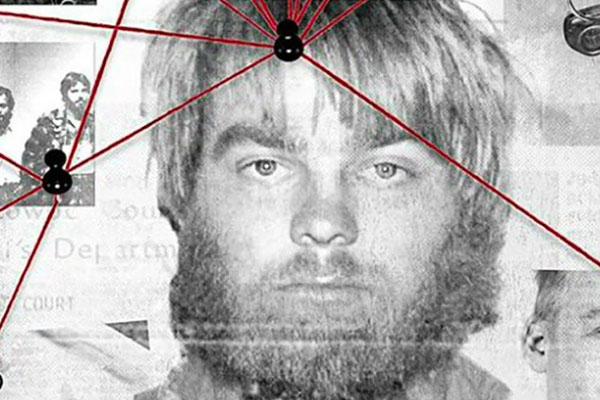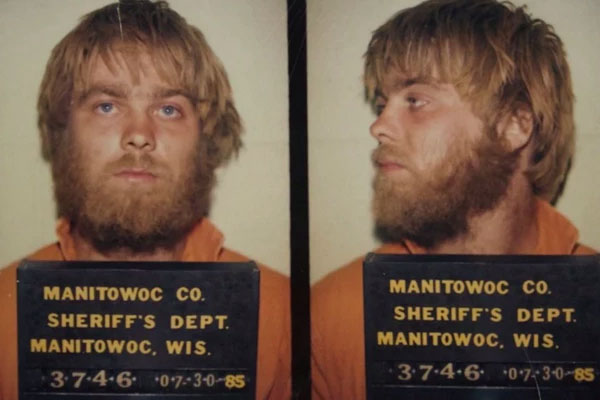19 Things Making A Murderer Covered Up About The Steven Avery Case
9. Avery Accused His Brothers Of Murdering Teresa

According to legal documents obtained by TMZ, in 2009 Steven Avery claimed that his own two brothers - Earl and Charles - may have killed Halbach. He claimed that both had a history of sexually assaulting women, including one instance when Earl pled no contest to sexually assaulting his own two daughters.
Charles meanwhile was charged with sexually assaulting his wife, holding her down and throttling her with a phone cord before having sex with her. That isn't the end of his rap sheet either: he had also been accused of hounding three more female clients aggressively including turning up at their homes.
According to Avery's documents, all of the women were harassed within a single month of the time Halbach went missing. And as an added kicker, Avery says his brothers had motive, as the family were fighting over the business and they were jealous of his impending multi-million dollar settlement for the wrongful conviction.
Yet no mention of any of these accusations were included in the documentary.
8. Two Jurors Were Related To Members Of The Police Department

One of the most stunning revelations since the documentary aired, and which was for some reason left out of the show, is that dismissed juror Richard Mahler found out that two of the jurors in the trial were related to members of the county's police department, as he stated to People:
"After the trial, I found out... was the father of a Manitowoc County Sheriff's deputy. Another juror, his wife works for the Manitowoc County Clerk's Office... I thought to myself, they shouldn't have been on the jury. That was a conflict of interest."
Not only that, Mahler also revealed that he had met up with another of the jury to go to a concert and asked how the jury had come up with a guilty verdict despite the early vote having seven innocent votes, three guilty and two undecided...
"...His statement was, 'Just think of all those things he did when he was younger.' I thought to myself, 'Are you serious?'"This trial was supposed to be based on the evidence that was presented to us. You're telling us that you convicted him based on what he did when he was younger. I did a lot of bad things when I was younger. That doesn't mean I deserve to be locked up for life."
Wouldn't that have been interesting information to include in relation to the questions over the impartiality of the jury?
7. Avery's Torture Chamber

Incredibly damningly for Steven Avery, Ken Kratz gave an interview to People magazine in which he revealed that during his time in prison the first time round, Avery allegedly "told another inmate of his intent to build a 'torture chamber' so he could rape, torture and kill young women when he was released. He even drew a diagram."
Further, Kratz claimed that "another inmate was told by Avery that the way to get rid of a body is to 'burn it.'" Additionally, Kratz revealed that Halbach's bones "were 'intertwined' with the steel belts, left over from the car tires Avery threw on the fire to burn," indicating that the body was burned on site and not later moved.
That is a slight misrepresentation of the trial though, as a Milwaukee Journal article from March 2007 states that the arson expert - Rod Pevytoe -called as a witness said that it could either indicate that the tires were used as an accelerant (with Halbach's body on top of them), OR it could indicate that her bones had been moved and scattered on top of the remains of the belts.
In both cases, that information was mysteriously left out of the documentary.
6. The Extent Of Avery's Animal Cruelty

As PETA have been discussing recently, the animal cruelty case against Avery that was discussed in passing by the documentary - and largely dismissed as his accidentally setting fire to a cat by the man himself - was unnecessarily downplayed.
Colleen OBrien, a senior director at the organisation said Making A Murderer "omitted specific details about how Avery, at age 20, doused the family cat with lighter fluid before throwing him onto a fire."
That is a noticeably different picture, and while it doesn't exactly confirm guilt in other crimes, it paints a more malicious image of Avery. Thus its lack of inclusion looks like a conscious effort to sweep information under the rug.